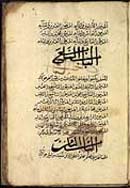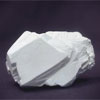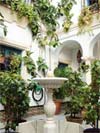Seeding the Renaissance – Science, Technology and Islam
Chemistry, Mineralogy, Gemology
The Arab legacy

al’embic (a retort for distillation)


Talc (from the Arabic 'talq'). Long before talc was used as a cosmetic it was mixed with mud and other materials to create a marble-like look for walls in the new cities of Islam

Zircon from Arabic/ Persian 'zarqun', a hard mineral containing square prismatic crystals. Arab craftsmen used them as a diamond-like gemstone for hundreds of years.

Borax (from Arabic 'bauraq'), a mineral found in arid regions. The Egyptians used borax in mummification. The Romans in Syria used it in glass making. In the 8th century Arab artisans found a use for borax in gold and silver work.

Antimony(from Arabic 'ithmid') a bluish-white metallic substance, known to the Romans as 'stibium'. Re-entered use in Europe as cosmetic and medicine as a result of Latin translation of Geber.

– Braudel, p81.
Medicine, Pharmacology, Botany



History
Architecture – Garden Cities





Mechanics

Law
Sources:
- W. Cook & R. Herzman, The Medieval World View (OUP, 1983)
- Fernand Braudel, A History of Civilizations (Allen Lane, 1994)
- William Dalrymple, From the Holy Mountain (Flamingo, 1998)
- N. H. H. Sitwell, Outside the Empire-The World the Romans Knew (Paladin, 1984)
- Edward Gibbon, Decline & Fall, Chapters 50-52 The Coming of Islam, Arab Conquests
- M. Brett, W. Forman, The Moors, Islam in the West (Orbis, 1980)
- Justin Wintle, History of Islam (Rough Guides, 2003)
- J. Bloom, S. Blair, Islam – Empire of Faith (BBC Books, 2001)
- J. J. Norwich, Byzantium, The Early Centuries (Viking, 1988)
- C. McEvedy, The Penguin Atlas of Medieval History (Penguin, 1987)
- Robert Marshall, Storm from the East (BBC Books, 1993)
Related Articles:


Debt to Arab scientists
Textiles





Magic Carpet
Pick a Card ..



